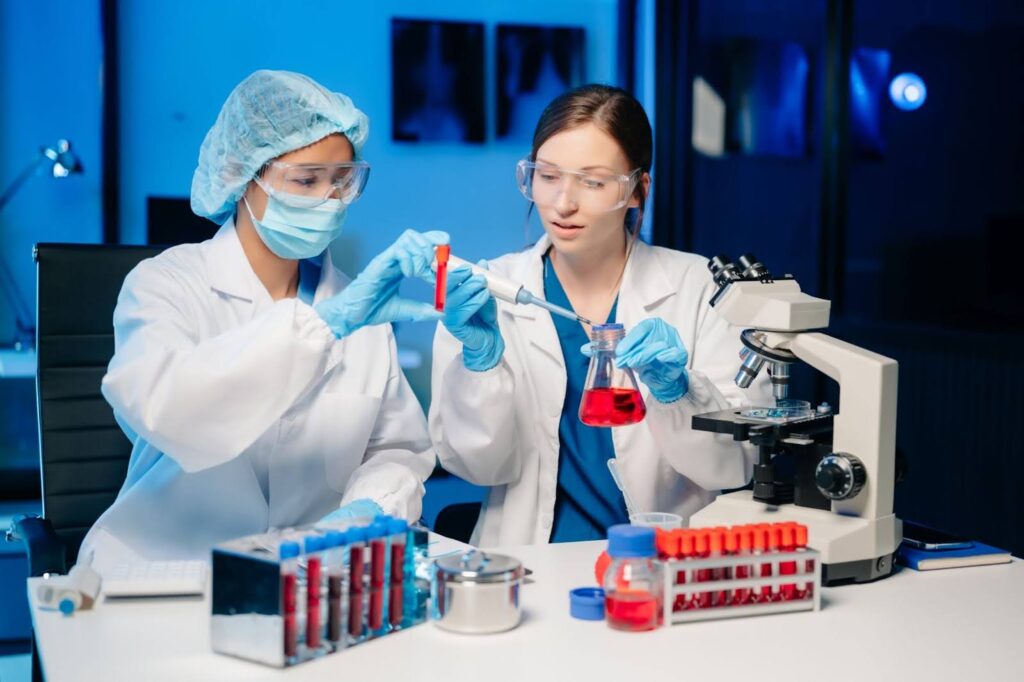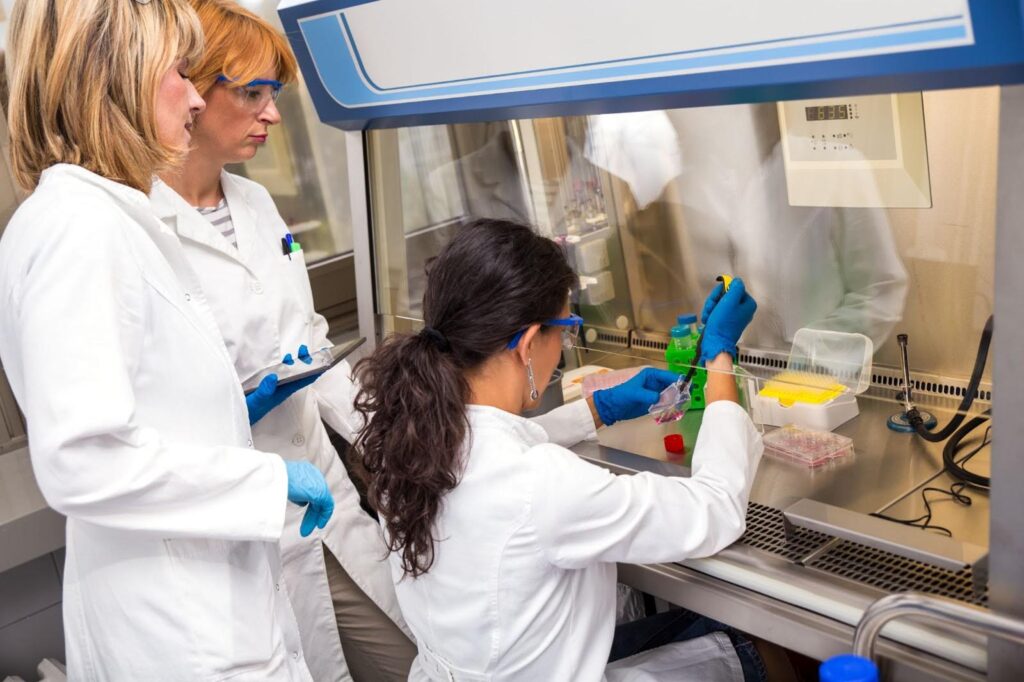
Top Innovations in Stem Cell Technologies to Watch in 2025
Breakthroughs in stem cell science are no longer distant goals. They are showing up in hospitals, clinics, and biotech labs worldwide. As discoveries emerge, patients stand to gain access to treatments once thought impossible. These aren’t just theoretical advances; they’re changing lives now. What comes next in 2025 will shift the landscape of medicine.
Why Stem Cell Technologies Matter Most in 2025
Healthcare is at a turning point in 2025. More patients need advanced care, and conventional treatments are falling short. Stem cell technologies offer a way to repair the body, not just manage symptoms. They’re being built into clinical systems and moving beyond academic labs. This year marks a shift in both momentum and public confidence.
Breakthrough Stem Cell Technologies to Watch in 2025
Medical science is racing ahead, and stem cell research is at the front. Labs across the globe are turning decades of theory into clinical success. With so many advances happening simultaneously, some technologies stand out for their potential to reset how we treat disease. Here’s what’s pushing the field forward in 2025.
The Rise of Stem Cell Tech in Regenerative Medicine
Stem cells are redefining the future of healing. In regenerative medicine, they repair tissues, replace damaged cells, and promote natural recovery. Their flexibility offers solutions for injuries and chronic conditions that resist standard treatments. As of 2025, several core technologies are pushing this field to the next phase.
More Accurate 3D Bioprinting
3D bioprinting once sounded futuristic, but now it’s scaling fast. This technique builds tissues layer by layer using bio-inks that contain stem cells. It allows scientists to produce functional human-like structures with unmatched precision. New printers use AI to monitor cell health and optimize tissue design in real time. These upgrades cut down production time and boost print quality. Researchers expect fully printed, vascularized organs to enter preclinical testing by late 2025.
Stem Cell Organoids Fuel Personalized Drug Trials
Organoids, the tiny replicas of human organs grown in labs, are making drug trials faster and safer. Scientists create them using stem cells taken from patients. These models mimic the real thing in structure and function. Drug developers test treatments on organoids to predict how real bodies will respond. It reduces trial costs and lowers the risk of toxic side effects. Personalized therapies based on organoid screening are already moving through regulatory review.
Regenerative Patches for Heart and Skin Healing
Using stem cells, researchers are building bioactive patches to heal organs. These thin, flexible materials are embedded with living cells that stimulate regeneration. In cardiac care, they’re being applied after heart attacks to support recovery. In skin repair, they help close chronic wounds and reduce scarring. Unlike traditional grafts, these patches integrate with the body and trigger natural healing. Hospitals in Japan and Germany have begun clinical trials with promising results.
Stem Cell Therapies Entering Clinical Mainstream
After years of research, stem cell-based therapies are finally reaching real patients. The push toward widespread clinical use is accelerating. From rare diseases to widespread conditions, 2025 is bringing these treatments out of the lab. The therapies becoming available this year are setting new medical benchmarks.
CRISPR Stem Cells Changing Treatment Protocols
Gene editing and stem cells are now tightly linked. CRISPR technology is used to correct genetic flaws inside stem cells before transplant. It is changing how we treat inherited diseases like sickle cell anemia and beta-thalassemia. Trials in the U.S. and Europe are already showing long-term remission. Patients are receiving one-time treatments instead of lifelong care. Regulators are closely watching these cases as models for other genetic conditions.

Improving Access to Allogeneic Stem Cell Banks Worldwide
Stem cell therapy used to depend on a patient’s cells. That’s changing with allogeneic, or donor-derived, stem cell banks. These offer ready-to-use cells matched to a broader population. Advances in immune-matching and genetic filtering now make this safe and scalable. Patients no longer need to wait weeks for custom-grown treatments. Global networks are forming to share donor cells across borders and institutions.
Cell-Based Therapies Are Advancing Cancer Treatments
Oncology is rapidly adopting stem cell strategies. Stem cells deliver drugs directly to tumors or rebuild immune cells damaged by chemo. Some therapies train stem cells to identify and destroy cancer cells. Clinical trials are expanding to include leukemia, lymphoma, and solid tumors. These new approaches may work better than traditional chemo, with fewer side effects. Hospitals in South Korea and Canada are leading this research.
Stem Cell Technologies for Neurodegenerative Disease
Stem cells are becoming a powerful tool for treating brain and nerve disorders. These diseases are among the hardest to manage, with few treatment options. Stem cell technologies offer a path to replacing lost neurons, reducing inflammation, and restoring function. Research in this field is advancing rapidly, with several clinical milestones set for 2025.
Stem Cell Therapies for Parkinson’s Recovery
Replacing damaged brain cells is now possible with stem cell implants. For Parkinson’s patients, researchers use dopamine-producing neurons grown from stem cells. These are injected into brain regions that control movement. Early-stage human trials show better control and fewer tremors. Patients report improvements in motor function without significant side effects. New protocols may shorten recovery time and increase cell survival.
ALS Trials Explore Stem Cell Nerve Support
ALS destroys nerve cells rapidly. Scientists are now inserting supportive stem cells around damaged nerves. These act like shields, releasing protective chemicals and slowing degeneration. Trials in Israel and the U.S. show the approach may extend mobility and speech. The cells also reduce the inflammation that worsens ALS symptoms. More extensive trials, with broader patient inclusion, are scheduled for 2025.
Stem Cell Exosomes Show Promise in Brain Recovery
Exosomes are tiny sacs released by stem cells. They carry proteins, RNA, and other healing signals. In stroke and traumatic brain injury recovery, they reduce inflammation and encourage regrowth. Since they’re small, they can cross the blood-brain barrier easily, making them ideal for noninvasive treatment delivery. Clinical programs in China and Australia are also exploring this for Alzheimer’s.
Ethical, Scalable, and AI-Driven Stem Cell Manufacturing
The push for faster, more transparent stem cell production is reshaping biotech. As demand grows, so does the need for safe, ethical, and efficient manufacturing. In 2025, companies focus on automation, data accuracy, and public trust. This shift is essential to meet the rising global demand for cell-based therapies.

Smart Bioreactors Are Redefining Cell Growth Precision
Growing stem cells used to be slow and prone to error. Smart bioreactors now automate much of the process. These machines use sensors and AI to track cell growth in real time. They adjust temperature, nutrients, and oxygen levels on the fly, leading to more consistent batches and lower contamination risks. Companies in the U.K. and Singapore are scaling these systems for commercial use.
AI Models Are Guiding Cell Differentiation Steps
AI doesn’t just monitor cell growth; it helps guide it. Researchers are training models to predict when and how to trigger stem cells to become specific cell types, removing the guesswork from differentiation and speeding up production for therapies targeting particular organs. 2025 will see the release of AI-guided stem cell kits for use in hospitals and labs. These kits improve results while cutting training time for new users.
Global Sourcing Standards Are Becoming Industry Norms
As more therapies reach patients, sourcing transparency matters more. Labs must show where their cells come from and how they’re handled. Governments are starting to mandate public registries and ethics reports. Patients want to know the origins and safety checks of their treatment. In 2025, several countries will launch databases that track stem cell usage across institutions. These databases will help weed out unethical practices and boost confidence in legal therapies.
How Stem Cell Tech is Changing Chronic Disease Care
Chronic diseases are straining healthcare systems around the world. Conditions like diabetes, arthritis, and heart failure need long-term management. Stem cell technologies could shift care from lifelong treatment to permanent repair. The advances coming in 2025 may create more durable and less invasive solutions.
Beta Cell Regeneration for Diabetes is Nearing Viability
Researchers are working on ways to regenerate insulin-producing cells. Stem cells grow new beta cells outside the body. Once transplanted, these cells monitor blood sugar and release insulin naturally. Trials in Canada show some patients staying insulin-free for months. If scaled correctly, this could reduce or replace daily injections. Device companies are also integrating these cells into implantable systems.
Stem Cell Implants for Joint Repair Are Expanding
Millions suffer from joint pain from arthritis. Stem cell injections have helped, but implants are now showing longer-term relief. These are cartilage-like materials seeded with stem cells. When placed in damaged joints, they reduce pain and improve flexibility. Patients recover faster and stay active longer. Clinics in Scandinavia are testing this on knees and hips.
Liver and Kidney Failure Treatments Are Advancing
Organ failure doesn’t always need a full transplant anymore. Scientists are using stem cells to rebuild portions of failing livers and kidneys. These partial repairs can extend organ function for years. New devices act as scaffolds, helping cells form the right structures inside the body. Researchers in South Korea and the U.S. are entering advanced trial phases. Insurance companies are watching closely as costs are projected to fall.
Follow the Surge of Stem Cell Technologies in 2025
The pace of stem cell innovation is accelerating. What seemed futuristic a year ago is now entering real-world care. Waiting on the sidelines means missing the shift that is already underway. Stay informed, ask better questions, and push for innovative, science-backed solutions. The next wave of medicine is being built right now.
Stay ahead of the curve. Visit the Stem Health Plus LLC blog for updates on the future of stem cell technologies.
